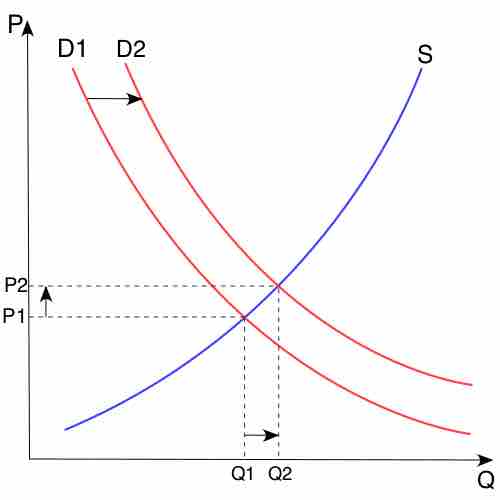Introduction
The amount of a good in the market is the supply and the amount people want to buy is the demand. Consider a certain commodity, such as gasoline. If there is a strong demand for gas, but there is less gasoline, then the price goes up. If conditions change and there is a smaller demand for gas, due to the presence of more electric cars for instance, then the price of the commodity decreases.
The factors influencing supply include:
- Price - As the price of a product rises, its supply rises because producers are more willing to manufacture the product because it's more profitable.
- Price of other commodities - There are two types: competitive supply (If a producer switches from producing A to producing B, the price of A will fall and hence the supply will fall because it's less profitable to make A), and joint supply (A rise in one product may cause a rise in another. For instance, a rise in the price of wooden bedframes may cause a rise in the price of wooden desks and chairs. This means supply of wooden bedframes, chairs, and desks will rise because it's more profitable. )
- Costs of production - If production costs rise, supply will fall because the manufacture of the product in question will become less profitable.
- Change in availability of resources - If wood becomes scarce, fewer wooden bedframes can be made, so supply will fall.
Factors influencing demand include:
- Income
- Tastes and preferences
- Prices of related goods and services
- Consumers' expectations about future prices and incomes that can be checked
- Number of potential consumers
Supply and Demand As an Economic Model
Supply and demand is an economic model of price determination in a market. It concludes that in a competitive market, the unit price for a particular good will vary until it settles at a point where the quantity demanded by consumers (at current price) will equal the quantity supplied by producers (at current price). This results in an economic equilibrium of price and quantity.
The four basic laws of supply and demand are:
- If demand increases and supply remains unchanged, then it leads to higher equilibrium price and higher quantity.
- If demand decreases and supply remains unchanged, then it leads to lower equilibrium price and lower quantity.
- If demand remains unchanged and supply increases, then it leads to lower equilibrium price and higher quantity.
- If demand remains unchanged and supply decreases, then it leads to higher equilibrium price and lower quantity.
Graphical Representation of Supply and Demand
Although it is normal to regard the quantity demanded and the quantity supplied as functions of the price of the good, the standard graphical representation, usually attributed to Alfred Marshall, has price on the vertical axis and quantity on the horizontal axis, the opposite of the standard convention for the representation of a mathematical function.
Since determinants of supply and demand other than the price of the good in question are not explicitly represented in the supply-demand diagram, changes in the values of these variables are represented by moving the supply and demand curves (often described as "shifts" in the curves). By contrast, responses to changes in the price of the good are represented as movements along unchanged supply and demand curves .

Supply and Demand
The price P of a product is determined by a balance between production at each price (supply S) and the desires of those with purchasing power at each price (demand D). The diagram shows a positive shift in demand from D1 to D2, resulting in an increase in price (P) and quantity sold (Q) of the product.
Equilibrium
Since the demand curve slopes down and the supply curve slopes up, when they are put on the same graph, they eventually cross one another. The point where the supply line and the demand line meet is called the equilibrium point.
In general, for any good, it is at this point that quantity supplied equals quantity demanded at a set price. If there are more buyers than there are sellers at a certain price, the price will go up until either some of the buyers decide they are not interested, or some people who were previously not considering selling decide that they want to sell their good. This process normally continues until there are sufficiently few buyers and sufficiently many sellers that the numbers balance out, which should happen at the equilibrium point.